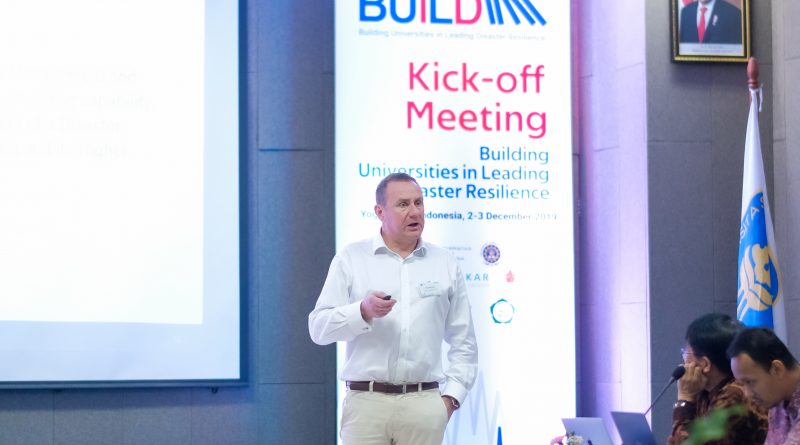
Disaster Response and Recovery Capability
Disaster response and recovery capability is not widely regarded as a university function. However, universities are typically large organisations with a duty of care towards their students, staff and associated communities and whose activities contribute substantially to local, regional, national and international socioeconomic development.
Moreover, universities have strong networks within the public and private sector and with local, regional and international communities. This places them into a unique position to not only act as catalysts for research and educational initiatives, but also to mobilise networks, resources and specialist expertise in the event of emergencies and during recovery phases. This position is strengthened through their capacity to contribute to knowledge transfer, scenario planning, post-assessments and impact studies, curriculum development and innovative research initiatives to improve the diverse aspects of disaster resilience prioritised in the National Disaster Management Plan.
Through the BUiLD project, we endeavour to consolidate and considerably strengthen the disaster resilience expertise and response capability that already exist in partner universities and their networks.
A BUiLD Disaster Resilience Blueprint and Information Exchange and Management Model (IEMM) will help design a model of the proposed Target Operating Model for all aspects of information exchange between the eight BUiLD Centres of Excellence in Disaster Resilience and their stakeholders.
The IEMM is the key product of the initial, essential analysis of Indonesia’s disaster resilience capability. It will ensure that the organisations within the Disaster Resilience Framework are known by all centres and stakeholders and that information can be exchanged in a timely manner, in accordance with agreed policies and processes. Moreover, it will ensure that IT systems used for receiving, processing and storing information is common throughout the National Disaster Resilience Network. The IEMM thus supports a national level of disaster preparedness and response and enables the establishment of a best-practice approach to disaster resilience preparedness and response, and the associated learning mechanisms.
The University of Gloucestershire as lead for this work package engaged an international resilience consultant as advisor to inform part of the development work, specifically for the conceptualisation of the BUiLD Disaster Resilience Blueprint and the Information Exchange and Management Model. Both frameworks will be informed by the resilience and emergency blueprint and multi-stakeholder information exchange modelling designed by the UK National Olympic Coordination Centre for the London Olympics in 2012. They will be specifically adapted for the higher education sector and inform the BUiLD Best Practice Model for HEI Disaster Resilience Governance.
The development of the eight Centres of Excellence and the creation of the National Disaster Resilience Network is overseen jointly by Universitas Islam Indonesia and Universitas Ahmad Dahlan in Yogyakarta.
Progress of activities
| Conduct risk and support analysis and complete IEMM questionnaire | completed |
| Devise Disaster Resilience Blueprint, Information Exchange and Management Model, Target Operating Model and Best Practices for HEI Disaster Resilience Governance | completed |
| Internal and external consultation | completed |
| Devise disaster resilience audit tool (IEMM, TOM and Best Practices for Organisational Governance) | completed |
| Deliver workshop on the use of the disaster resilience audit tool | completed |
| Conduct institutional self audits and devise action plans | completed |
| Deliver workshop to review institution action plans | completed |
| Visit CoEs to oversee review institutional action plans and embedding of activities | completed |

